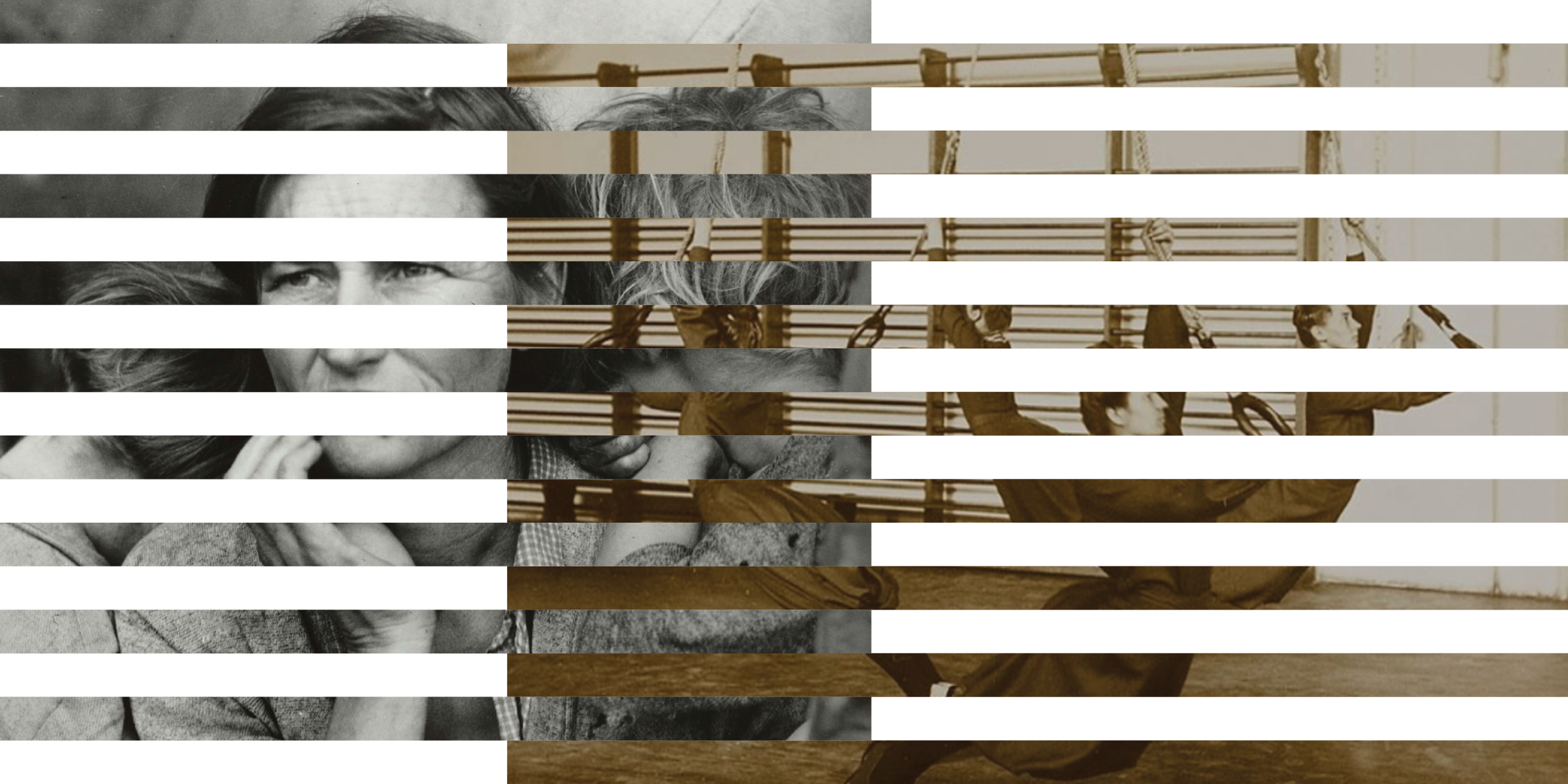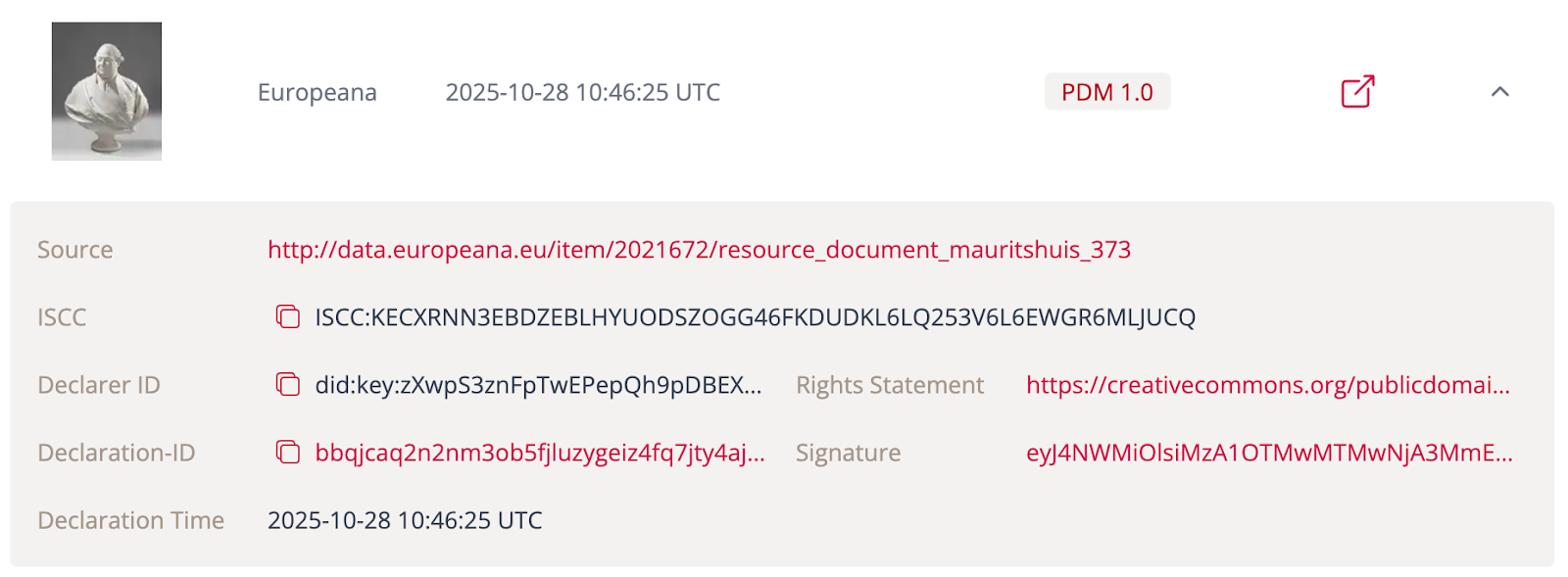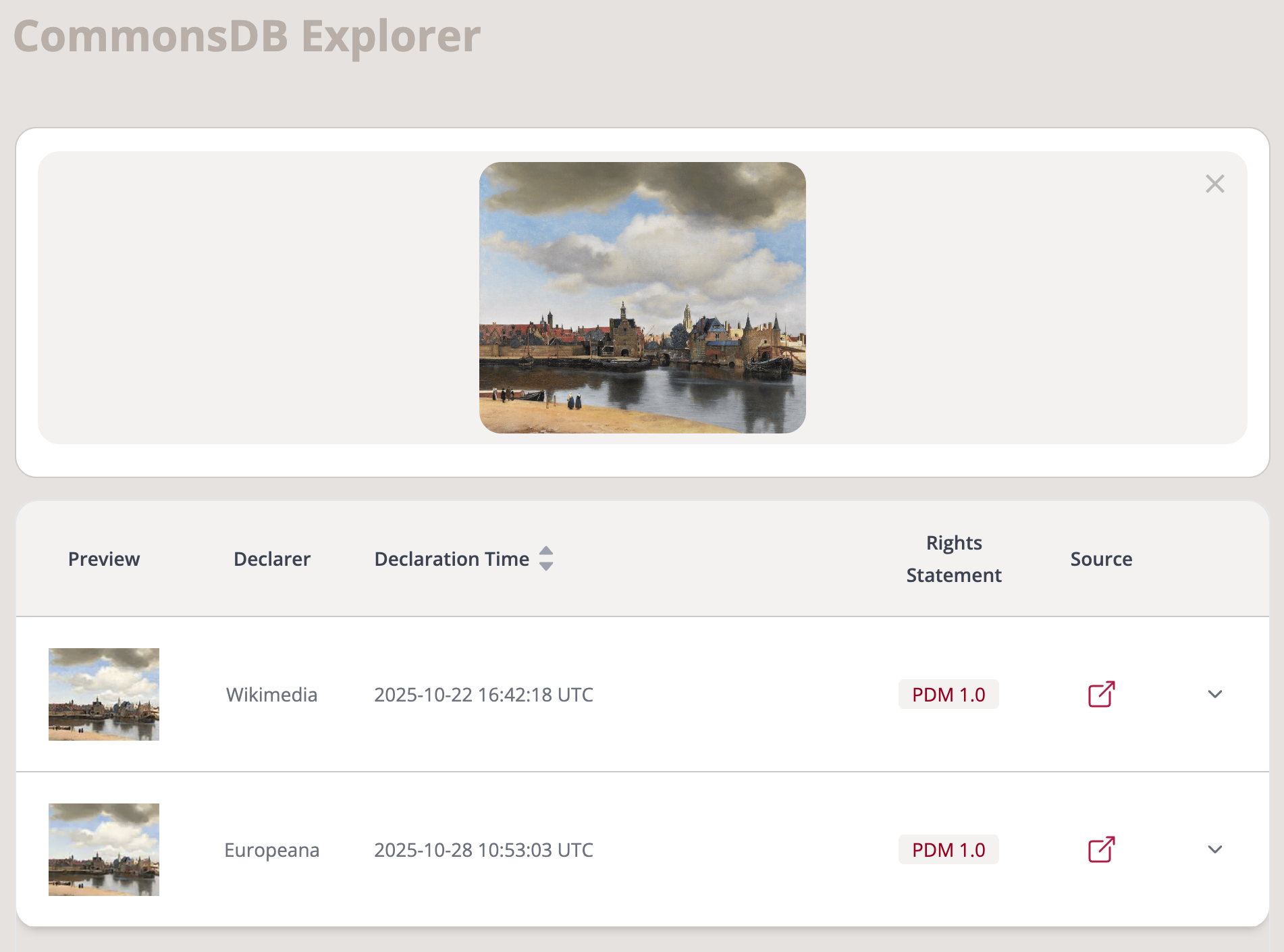Introducing CommonsDB Explorer
CommonsDB Explorer — the first public interface to the CommonsDB registry — is now live.

CommonsDB Explorer, the public user interface for the CommonsDB registry, is now live. For the first time, anyone can explore registry declarations — a significant milestone in building a transparent, accessible infrastructure for rights-aware reuse of Public Domain and openly licensed works.
Explore registry data
The Explorer opens CommonsDB data to everyone, making it easy to browse and discover declarations — verified information shared by data providers on the copyright status of digital content. We’re launching with just over 200,000 declarations from our CommonsDB partners — the Europeana Foundation and Wikimedia Sverige — to showcase the Explorer’s functionality and give users a chance to test and experiment with the system.
To start browsing, click Random Declarations and explore what’s already been registered. You can also upload a digital file to see whether a matching declaration exists — try it with sample images from this Wikimedia Sverige page to see how it works in practice.
Declarations in the Explorer

Each declaration is accompanied by metadata — including the declarer (the organization or platform that submitted the declaration to the registry), a timestamp showing when it was made, a thumbnail preview of the referenced work and a linked rights statement describing its copyright status. Together, these elements provide a transparent record of provenance and context, showing who made the declaration, when it was created and under what terms the work can be reused.
How CommonsDB keeps rights data connected
CommonsDB’s technology links each declaration to a content-derived identifier — an ISCC — which recognizes works across formats and versions. This ensures rights information can always be verified and retrieved, even if metadata is lost along the way.
For example, uploading a JPEG of Vermeer’s View of Delft to the Explorer returns two matching results: one declaration from Wikimedia Sverige and another from the Europeana Foundation. Each includes the Public Domain Mark statement and links to the source asset on the respective repository.

While the Explorer offers a clear, human-facing view of the registry, CommonsDB’s core value will come through its APIs. Most future users will be machines rather than people — consuming declarations and rights metadata programmatically, integrating CommonsDB data into other systems and workflows.
By linking declarations, identifiers and metadata across systems, CommonsDB strengthens the connection between digital assets and their associated rights information. This interoperability underpins more reliable attribution and rights transparency for cultural heritage institutions, platforms and other organizations making collections available online.
Try it out and share your feedback
With the first version of the Explorer now live, we’re entering an active phase of use, feedback and iteration. We invite you to try the CommonsDB Explorer — upload a file, see how rights information appears, and share your impressions. Every observation helps shape what comes next.
As this is the very first release, you may spot the occasional quirk or rough edge while we continue refining the interface and expanding its functionality. That’s part of the process — your feedback will help guide where we focus next.
In the coming weeks, we’ll be enhancing search, filtering and the overall user experience, and expanding the registry’s coverage by onboarding more trusted repositories of rights information. If your institution is interested in CommonsDB, please feel free to get in touch by email.